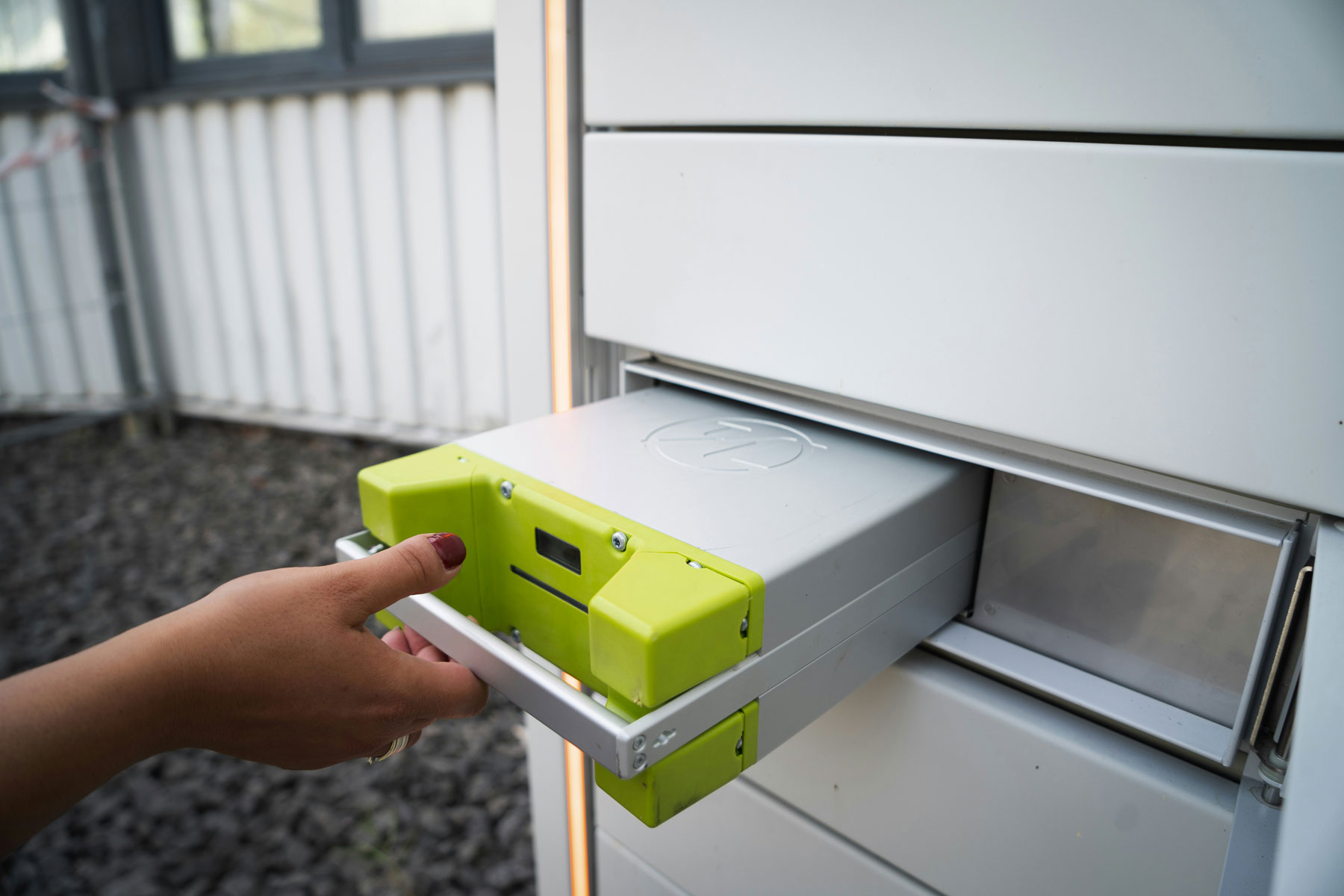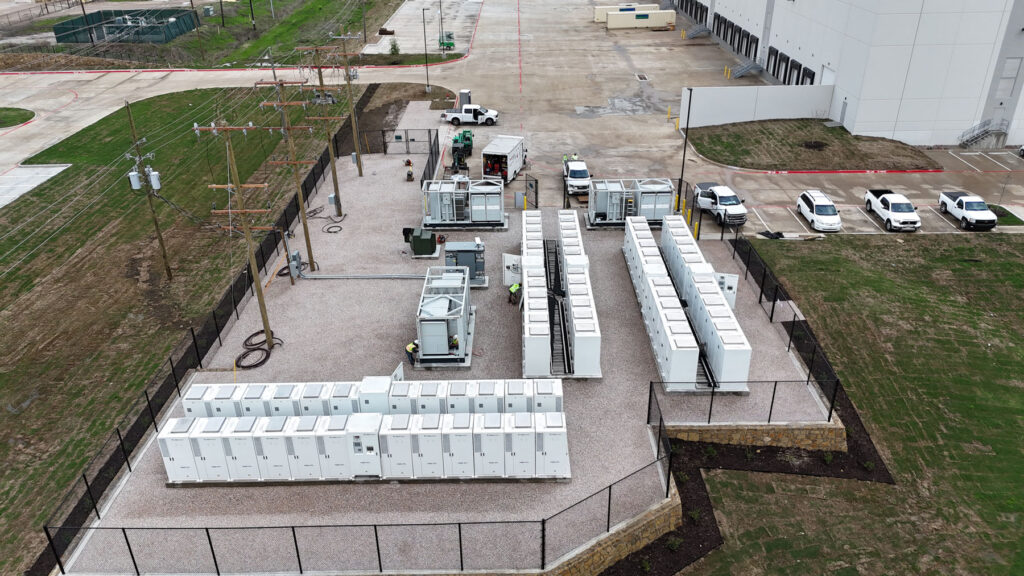From Experimental Beginnings to Polished Power: The Evolution of Battery Storage Solutions
Share this post:

Since the early 2010s, the battery energy storage sector has experienced rapid evolution, starting with pioneering companies and evolving into today's landscape dominated by significant players offering advanced products. This journey has positioned battery energy storage as an indispensable asset class in the changing energy landscape.
A Brief History of Battery Energy Storage Systems
The development of battery energy storage systems (BESS) has been a fascinating journey marked by significant technological advancements and strategic shifts in the industry. This article delves into the history of these systems, tracing the evolution from large-scale buildings to sophisticated containerized solutions, and sets the stage for understanding today's procurement and operations strategies.

RavenVolt, 9.95 MW - 2 hr. Utility Battery System in Texas
Buildings vs. Containers
In the early days of utility-scale stationary storage (2010's), BESS were often housed in large metal buildings explicitly designed for this purpose. In late 2012, Xtreme Power commissioned a 36-megawatt battery built inside a metal building in West Texas for Duke Energy- one of the first of its kind. These structures provided the necessary space and environmental controls but were expensive and inflexible. As the industry progressed, the shift toward containerized BESS became a game-changer, offering portability, scalability, cost-effectiveness, and improved safety.
Lead Acid vs. Lithium-ion
The first systems were installed with lead acid batteries, similar to what starts your internal combustion engine (ICE) vehicle. The chemistry was proven to be misaligned to the need, not only in energy density and duty cycle but also in state of charge requirements and maintenance requirements, the latter of which proved to be very high and costly in labor. The investment in larger-scale lithium batteries to power electric vehicles turned out to be the economic and technological spark that the stationary storage industry needed.
EV Investment Bolsters the Stationary Storage Industry
Early concerns about oil and its environmental impact jumpstarted EV tech investment in the late 1990s. Following this, the Nissan Leaf's arrival in 2010 offered a practical and affordable electric car for the masses, proving to be a distinct turning point for the development and investment into EV technology. The automotive industry's investment in electric vehicles (EVs) propelled the growth of lithium-ion batteries, surpassing traditional lead-acid batteries in energy density, efficiency, and lifespan.
NMC, LTO, NCA, and LFP, and many more
Battery chemistries such as Nickel Manganese Cobalt (NMC), Lithium Titanate Oxide (LTO), Nickel Cobalt Aluminum (NCA), and later Lithium Iron Phosphate (LFP) emerged, each with its own set of advantages and use cases. There were many others, but these quickly percolated to the top.
These lithium-based chemistries enabled significantly higher energy density than lead acid and much longer battery life (measured in "cycles").
The First Packaged Batteries
The original "batteries" being sent for testing were not very well packaged at the time. Often, testing centers would receive a single battery module, a tray, or a rack. The goal was to determine which chemistry best suited the various applications and use cases being developed for energy storage. Energy arbitrage was always an obvious use case. Still, the ancillary benefits of frequency, voltage, and islanding capabilities of a BESS added an element of complexity in determining which battery performed best in these disparate use cases. The early stages of R&D for this purpose truly felt like the wild-west days of stationary lithium-ion based energy storage for those involved.
NMC Technology Takes the Lead
NMC batteries became widely favored for their superior balance of performance, making them the go-to choice for various applications. In 2013, Samsung SDI pioneered by forming a team dedicated to creating the Unified Energy System, merging UPS and ESS functionalities into a single solution. This innovation led to the launch of one of the first rack-level batteries featuring an in-built Battery Management System (BMS), selecting NMC chemistry for its efficiency. The collaboration with Sungrow in a Joint Venture accelerated the production of a high-quality lithium-ion BESS, catering to the expanding market with ample manufacturing capabilities for large-scale projects. This collaboration effectively set the benchmark for packaged battery systems in terms of design and chemistry. Consequently, Korea quickly emerged as a leading center for BESS technology.
The Integrator Model Emerges
The lag in productizing DC blocks created a demand for integrators who could bridge the physical and control integration of the PCS and the varying battery packages. By this time, in the second half of the 2010s, companies like DynaPower, Ideal Power, and a handful of others had already successfully packaged Power Conversion System (PCS) units. The value proposition for the integrator was to ensure the energy storage systems operated reliably and safely. The integrators began combining PCS with the battery system in a factory environment to reduce installation complexity and costs, thereby increasing quality and safety. Xtreme Power (later acquired by Younicos), Tesla, Sungrow (in partnership with Samsung), Powin, and NEC stood out in this era as the leading integrators in the market.
The Productized DC Block
Battery OEMs began to package DC blocks, incorporating all battery system components into one outdoor-rated enclosure that housed the battery racks, BMS, thermal controls, fire suppression, etc., to deliver plug-and-play solutions. This was a natural progression for battery OEMs, who are inherently product packagers, to take on this role in the evolution of energy storage systems. Around this time, we started seeing LFP technology surpass NMC for economic and safety reasons. CATL, for instance, was at the forefront of this movement with the launch of their LFP-based DC Block. The eventual launch of their EnerOne and EnerC products in 2022 offered a scalable and user-friendly solution through the containerized design.
The Market Is Forced to Value Controls – Queue the "EMS"
Throughout the 2010s, the market struggled to comprehend and appreciate the impact that intelligent controls would have on a BESS project. The focus points of a BESS procurement process seemed to be likened to solar generators or even transformers, which are passively controlled. It was not appreciated that the keys to unlocking the value of an asset which can act as both a load and a rapid-responding generator with high speed and fidelity cannot be done without advanced control systems. Queue the Energy Management System (EMS) for BESS projects.
Selecting the right EMS for the project design and operational intent is critical to the project’s success. In the early 2020s we saw the branding and launch of several EMS-focused companies. This decision point is now better understood in more recent years, and the market tends to look at this selection with more intent. However, it is critical to understand the full control plane, which is far more than the EMS*.
*A deep dive into battery controls and software will be featured in a future article.
The Modular BESS
In recent years, the separation of PCS and DC block has compelled the market to think differently about their procurement strategy. There are now many paths to bringing storage to their sites, fundamentally broken down into two questions: Do I have the capital, experience, and desire to buy directly from the OEMs? (Maybe I should hire a 3rd party to help me with this?) Or do I prefer the integrator model so the party who will ultimately be responsible for operating and controlling the asset is responsible for providing a turnkey solution- diverting risk in exchange for dollars?
The BESS Market of 2024
Catching up to today's set of circumstances, it is evident the battery energy storage market is on the cusp of transformative growth, it continues to expand its technological horizons and sectoral applications at a more rapid pace than ever before. Initially, the industry leaned towards single-source providers for comprehensive hardware, software, and maintenance solutions. However, technological advancements have ushered in an era of specialization, allowing diverse entities to offer components, control systems, software solutions, and support services independent of one another.
This diversification has complicated the supply chain, challenging developers and independent power producers (IPPs) to navigate this complexity wisely to optimize project returns. Future discussions will delve deeper into these developments, offering insights into navigating this evolving landscape.
written by:
Cody Guidry
Vice President of Energy Storage

